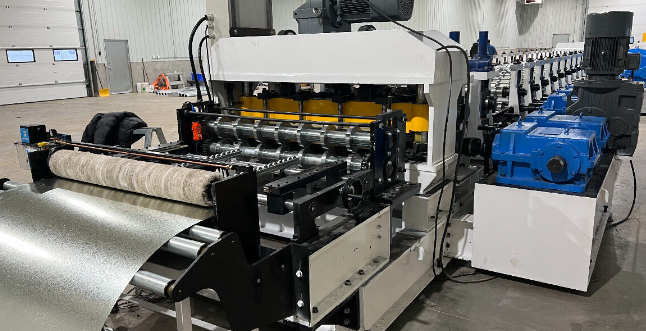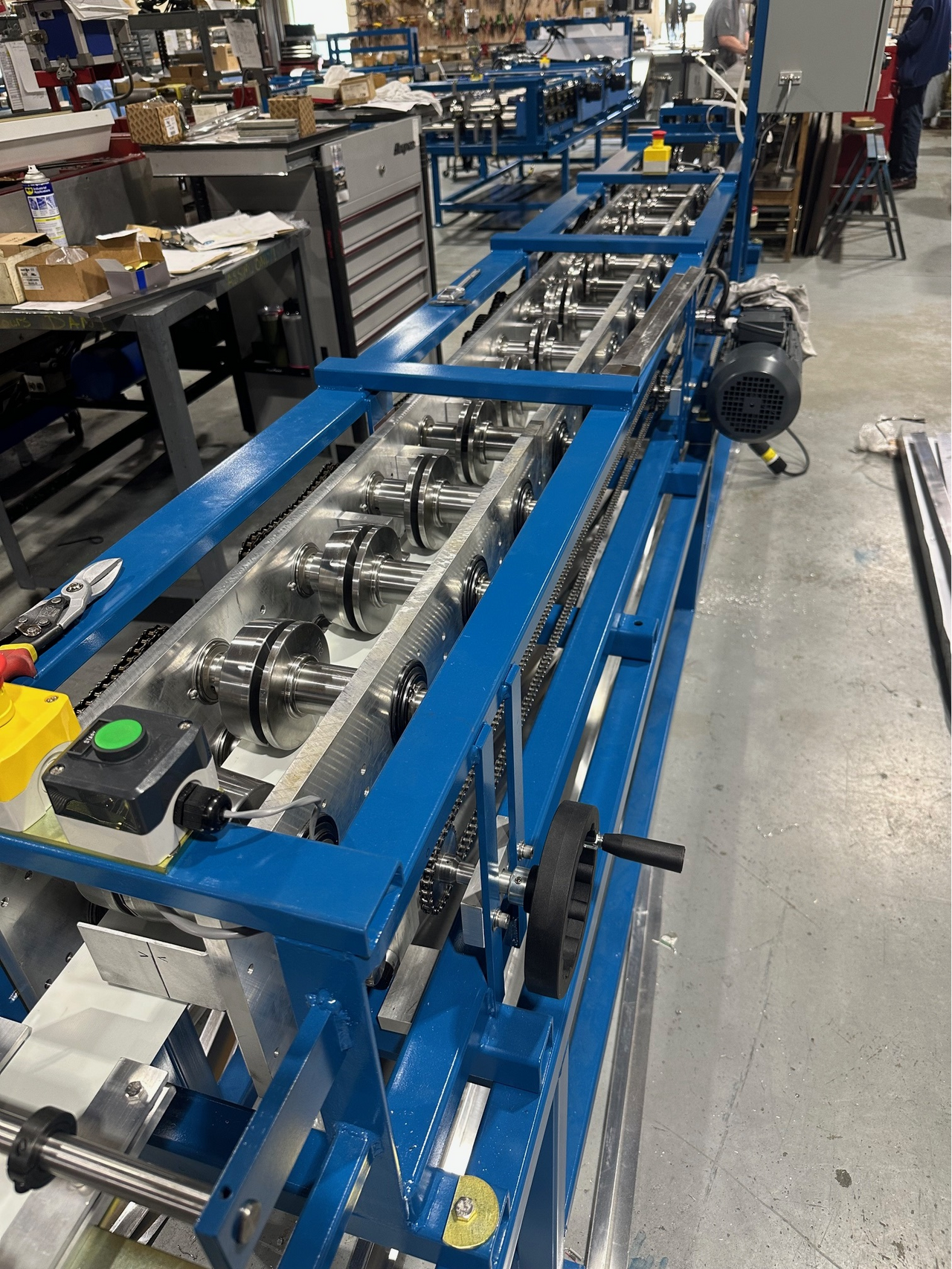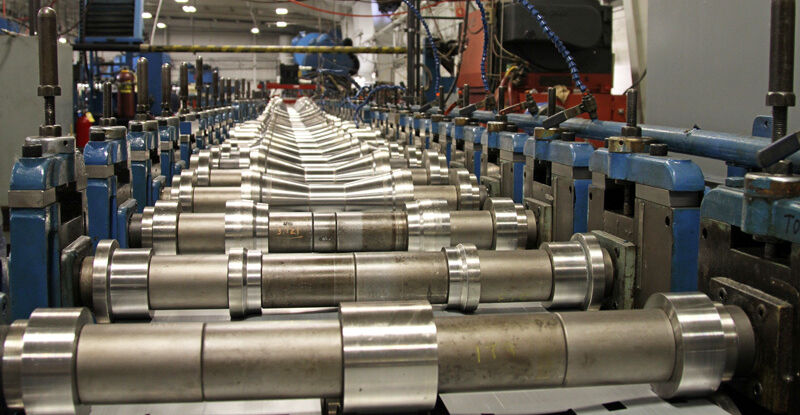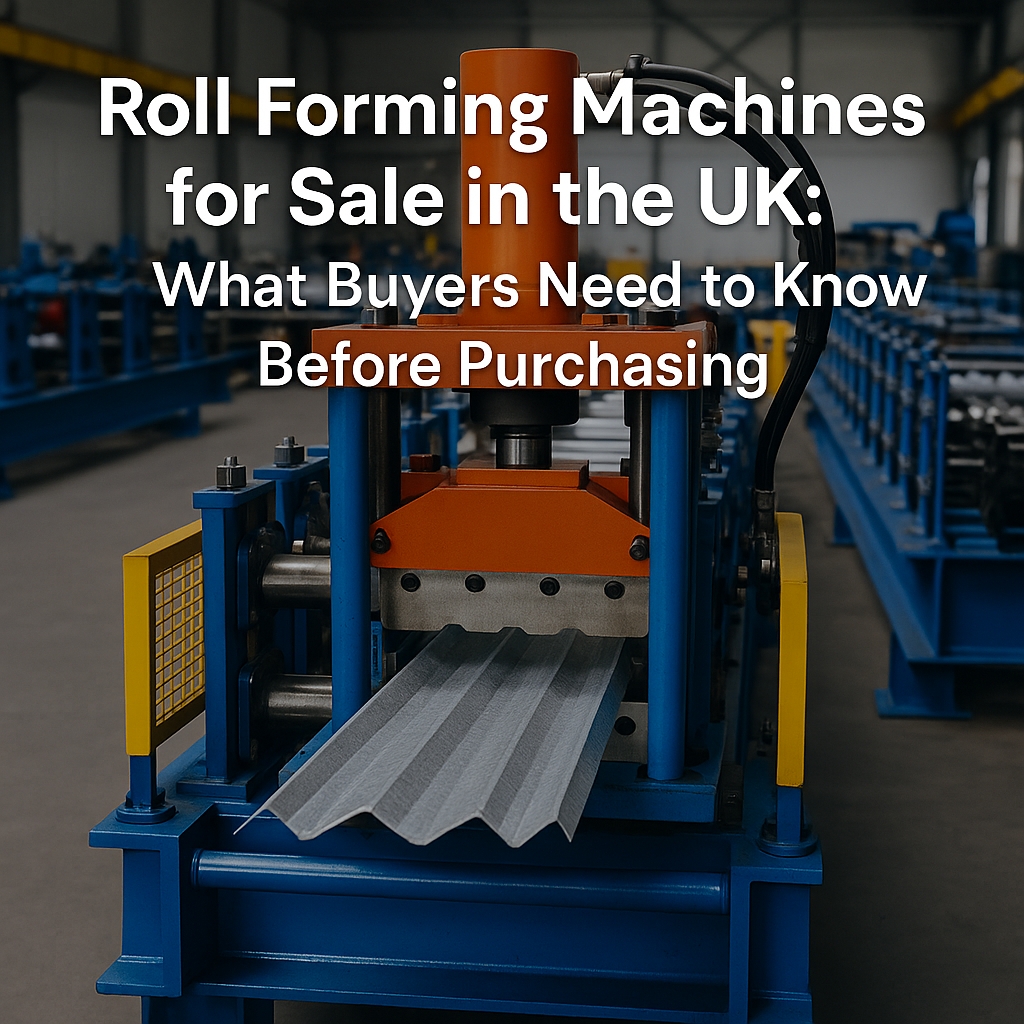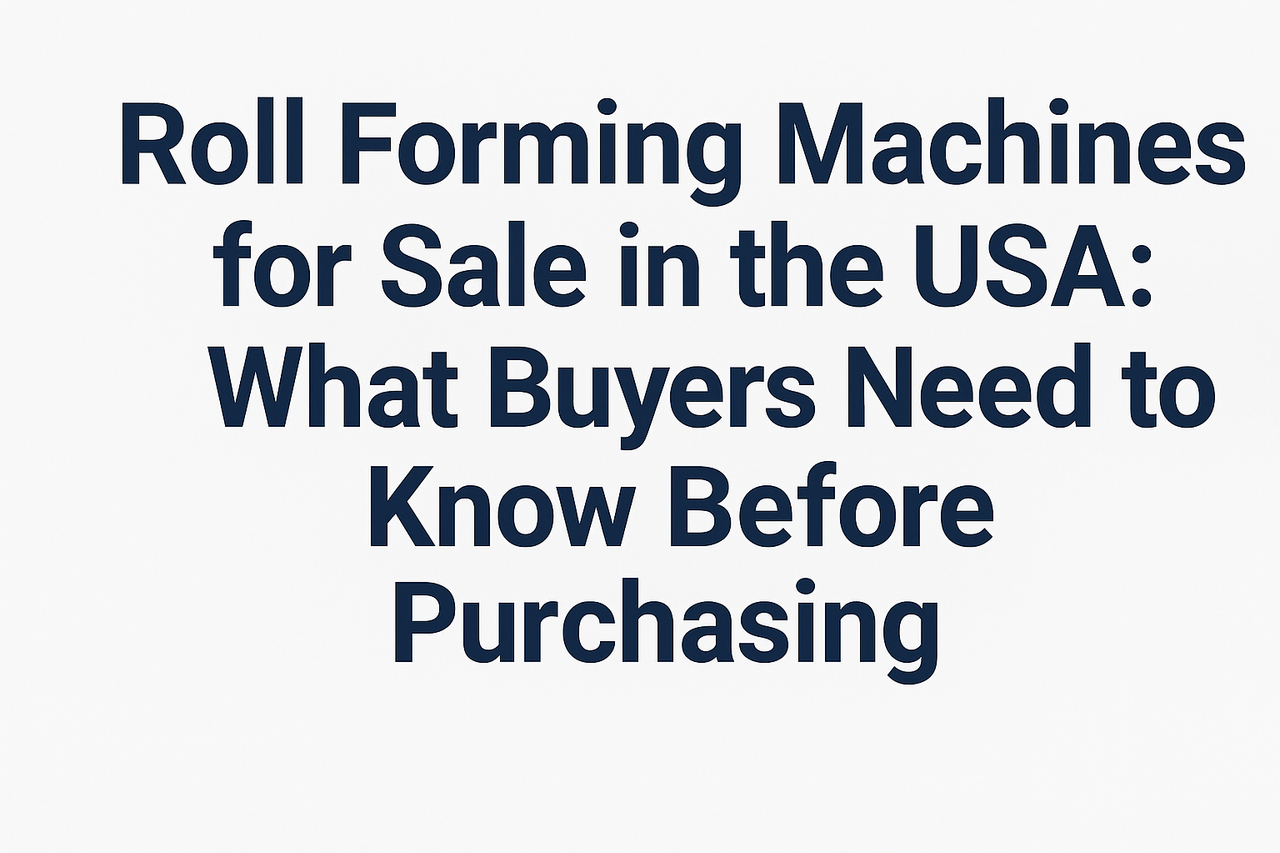A metal roll forming machine is a piece of equipment used to continuously shape and form long strips of metal (usually steel, aluminum, or other alloys) into desired cross-sectional profiles by feeding them through consecutive sets of rollers. These machines are commonly used in the construction, automotive, and industrial sectors for creating products such as roofing panels, structural components, gutters, and more.
Key Features of Metal Roll Forming Machines:
- Continuous Operation: Roll forming is a continuous process, which allows for the efficient production of large quantities of uniform profiles.
- Customizable Profiles: Machines can be designed or adjusted to create various profiles such as roofing panels (standing seam, corrugated), structural components (C & Z purlins), and other custom shapes.
- High Precision: Roll forming machines offer precise control over dimensions and thickness, resulting in consistent quality.
- Automated Systems: Many machines come with automatic controls and programmable logic controllers (PLCs) to enhance accuracy and reduce labor costs.
- Material Versatility: These machines can work with various materials including galvanized steel, stainless steel, aluminum, copper, and more.
Common Products Made with Metal Roll Forming Machines:
- Roofing Panels: Standing seam, snap-lock, PBR, B-deck, and other metal roofing profiles.
- Structural Components: C & Z purlins, U-channels, metal decking.
- Flashing and Trim: Roof flashing, drip edges, metal trim.
- Roller Shutter Doors: Aluminum or steel shutter doors for industrial or commercial applications.
Metal profiles
Metal profiles are long, continuous cross-sectional shapes made from metal, typically created through processes like roll forming, extrusion, or press braking. These profiles serve as structural or decorative elements in various industries, including construction, automotive, aerospace, and manufacturing. Metal profiles are essential in creating framing, support systems, roofing, cladding, and many other applications.
Common Types of Metal Profiles:
- C and Z Purlins: Used in structural steel frameworks, typically for roof and wall support in industrial buildings.
- I-Beams and H-Beams: Standard structural profiles used in construction to support heavy loads.
- L-Angle (Angle Iron): An L-shaped profile commonly used in construction for reinforcement, frameworks, and general structural applications.
- U-Channels: U-shaped profiles often used for edge protection, support, and framing applications.
- T-Profiles: T-shaped metal profiles used for structural support in flooring, ceilings, and other construction elements.
- Hat Channel: A metal profile shaped like a hat, commonly used for furring, ceiling systems, and exterior cladding.
- Box Sections: Rectangular or square hollow profiles used for construction, machinery, and frameworks.
- Zee and Cee Profiles: Often used in roofing systems and as girts or purlins in building structures.
- Snap Lock and Standing Seam Roofing Profiles: These are specifically shaped metal profiles designed for metal roofing systems.
- Flat Bar Profiles: Simple, flat, rectangular profiles used for a wide range of general-purpose applications.
Materials Used for Metal Profiles:
- Steel: Galvanized steel, stainless steel, and cold-rolled steel are common for structural profiles.
- Aluminum: Lightweight and corrosion-resistant, often used for decorative profiles, window frames, and lightweight structures.
- Copper: Sometimes used in roofing profiles due to its durability and aesthetic appeal.
- Brass and Bronze: These are used for decorative and architectural profiles.
Manufacturing Process for Metal Profiles:
- Roll Forming: Continuous bending of long strips of metal into a specific profile by passing through successive sets of rollers.
- Extrusion: For aluminum or copper profiles, metal is forced through a die to create a specific cross-sectional shape.
- Press Braking: For simpler profiles, sheet metal is bent into shape using a press brake.
Applications of Metal Profiles:
- Construction: Roofing systems, wall panels, framework, purlins, and decking.
- Automotive: Structural components, trim, and body panels.
- Aerospace: Lightweight structural components and skin panels.
- Furniture: Frames, structural reinforcements, and decorative elements.
- Electrical: Cable trays, support systems, and brackets.
Machine matcher specialise in matching your roll forming machine requirements with the perfect new or pre owned machine.
We partner with, and represent some of the finest roll forming manufacturers in the market. For more information and a free machine quote please contact us today or view all machines.
